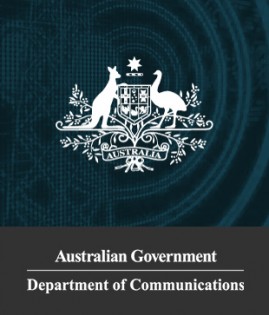Contact us
First Floor, 159 Victoria Pde
Collingwood, VIC 3066
(Google Map)
1300 727 952
or
+61 3 9910 4099
User research and new site for Victorian Government department
Salsa Digital worked with a Victorian Government department to conduct detailed user research and build a new website that delivers a better user experience. This site also marks the first client implementation using Victoria’s Single Digital Presence.
The players
Our client is a branch/department within one of the larger Victorian Government departments, offering a range of services to other agencies across the state. (Note: Due to a strict media/communications policy, unfortunately we can’t name this department.)
The problem
Our client’s services were buried in its parent department’s website and many agencies were unaware of the branch and the services it offered. The client needed a new website to help streamline its services and market its services across Victorian government departments. A dedicated website would also give the branch better visibility.
The project had three separate services and three separate stakeholder groups, all with diverse interests. The client wanted a user-validated information architecture (IA) and a great user experience so users can find what they’re looking for easily and quickly.
While this department was looking for a vendor, the Single Digital Presence (SDP) whole-of-government digital platform project was in full swing. Our client decided it would build the new website on the SDP platform to access the many benefits of SDP, including the SDP Atomic Pattern Library.
Note: SDP is the Victorian Government’s new digital platform that’s been set up to unify digital services across the Victorian Government. SDP consists of three main products — Bay (an open-source platform based on Lagoon), Tide (a Drupal 8 CMS distribution) and Ripple coupled with Nuxt (the frontend presentation layer). Read more about SDP.
The solution
This website project had two distinct streams, the site build itself and extensive user research. For much of the project, these streams ran concurrently, feeding into each other as necessary.
In terms of the site build, first SDP’s out-of-the-box solution was validated. The site uses the SDP core (base functionality) plus a module for customisations to the colour palette (to reflect our client’s brand). Using SDP to set up the new site meant the site build was quick and easy. The toolkit of components is comprehensive and met all our client’s needs.
The new site uses all three products of the Single Digital Presence platform — Bay, Tide and Ripple. It marks the first client implementation of SDP (independent of the SDP alpha project and the two pilot sites, the Governor of Victoria website and the Department of Treasury and Finance website).
User research
During the planning stage, Salsa also conducted extensive user research to help establish the information architecture (IA), make design adaptations and adjust labelling and content to help better meet user needs.
The user research component of the project was broken into six stages:
- Preliminary user research
- User pathways for IA
- User research surveys and IA refinement
- IA tree testing
- User interaction testing on high-fidelity, clickable prototypes
- High-fidelity prototype AB testing (testing two variants)
Preliminary user research
We started with validation of the problem statement for each service through exploring the why, how and what for each service cluster. We then reviewed the existing service journey maps, and completed gap analysis between the current state service journeys and the real needs of end users. Empathy mapping workshops indicated two distinct user types — new users and existing users — with very different information needs. This led to the development of two different IA pathways, one for new users that included guidance and instructions to engage in a service, and one for existing users that provided quick access to the service portal they wanted.
User pathways for IA
This stage included key services journey mapping for the unique needs of both types of users. We discovered two distinct service interaction complexity levels we needed to consider when designing the IA: simple and transactional; and complex, relationship-based interactions.
User research surveys and IA refinement
During this stage, we developed draft IA and conducted user testing of draft low-fidelity designs. Online surveys were created for each service stream to validate earlier findings in the user research and to test assumptions. This round of research further refined our understanding of the distinct pathways, channels and information needs for new users and existing users.
IA tree testing
IA tree testing used Treejack to conduct menu functionality and navigation tests. The Treejack testing provided good user feedback direction and the IA navigation tiers were adjusted based on the results. Our findings from this stage included adjustment of interaction pathways and specific actionable items like the need to remove an FAQ section from top-tier navigation.
User interaction testing on high-fidelity, clickable prototypes
The user testing results, screen recordings and user feedback for each session were combined with key insights to inform the next version of the IA, component layout and graphic design. The key insights also informed labelling and content direction. From this stage of the testing, we made specific changes such as re-ordering quicklinks, re-ordering the service icons and adding a new ‘book now’ icon.
High fidelity prototype AB testing (testing two variants)
This final stage of user research, AB testing, provided another round of refinement and yielded very specific results in terms of the best navigation and refined labelling to help users.
AB testing compares one design with a variation of the same design to see which design is preferred by the end user to complete the task. The Salsa team used Helio AB testing software to carry out remote online testing with end users. The software captures heat mapping (showing locations of users’ clicks to achieve requested tasks) and also captures demographic data and other useful analytics.
The benefits
The new site delivers many benefits, including:
-
A new site to market our client’s services and increase visibility internally
-
A site built on extensive user research to create the most intuitive content pathways
-
A better citizen experience through tested components and design
-
User-validated design and IA
-
An easy-to-use content management system (CMS)
-
An up-to-date CMS, which minimises security risks
-
A responsive site that can be viewed on desktops, tablets or smartphones
-
An AA accessible site
-
Reduced build costs because the site is built on SDP
-
A site supported by Victoria’s Department of Premier and Cabinet (DPC) and its team (because it’s an SDP site)
-
A single point of contact for queries
-
The ability to grow with SDP as new features are added (this is one of the benefits of NOT customising the out-of-the-box SDP solution)
-
The ability to contribute user research and IA learnings back to SDP to contribute towards its continuous improvement model.
Why Salsa Digital?
Salsa Digital secured the site build based on our strong response to the RFQ and our proven track record in digital government Victoria. Our intimate knowledge of the SDP project and environment also provided another incentive to contract our services.
About Salsa Digital
We are a digital agency focused on open source for social good and innovation. We’re committed to the open everything movement (OpenX) and to the many benefits this ethos provides including transparency, innovation, and sharing and improving problems and patterns solved by the pioneers before us.
The open source movement has played a key role in the evolution of Salsa. Over the years, as technology and practices have developed, this commitment to open source has grown to encompass a much broader base beyond open source CMSs — open data, open platform and open design. We contribute and deliver services in all these areas, with a strong involvement in specific open source initiatives such as Drupal, Wordpress, GovCMS, Single Digital Presence, Kubernetes/Lagoon and CKAN.


